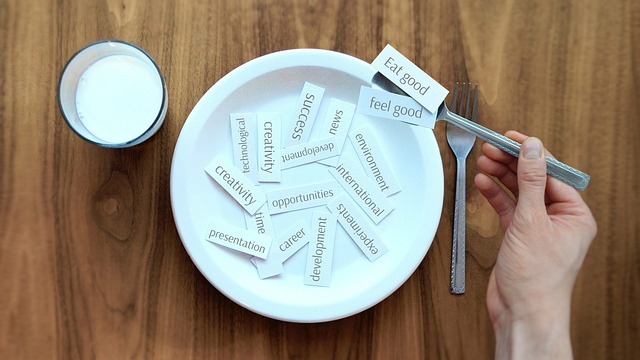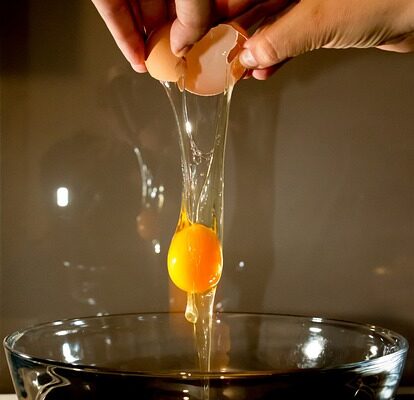High-protein diets promote consuming more protein and fewer carbohydrates and fat in order to lose weight, increase energy, and improve athletic performance.
Protein is a necessary nutrient for good health. It is in charge of various critical processes in the body, including hormone production, enzyme production, and cell repair and maintenance.
Protein-rich diets aid in reducing appetite, promote satiety, increase metabolic rate, and preserve muscle mass. When it comes to diets, however, one size does not fit all, and what works for one individual might not work for another.
High-Protein Diet Plan for 7 Days
While there are numerous variations on a high-protein diet, here is one:
- Day 1: consists of eggs, cottage cheese, whole grain toast, and fruit. Whey protein smoothie with milk; Sirloin steak, sweet potato, sautéed spinach.
- Day 2: Oatmeal with protein powder, shredded zucchini, egg whites, and berries; Apple slices, hard-cooked eggs; Tuna salad on whole grain with a side salad; protein bar; chicken pasta primavera with roasted broccoli.
- Day 3: protein pancakes with mixed berry sauce. Cottage cheese with diced apples and cinnamon; Chili made with extra-lean meat, beans, and vegetables, served with cornbread; Pear whey protein shake; Grilled chicken breast with green beans and brown rice.
- Day 4: Scrambled eggs with smoked salmon and sautéed asparagus; whole-grain crackers with turkey pepperoni stick; chicken salad wrap with greens, cucumber, and avocado; boiled eggs with pita bread; poached white fish with lemon, broccoli, and rice pilaf.
- Day 5: Steak, egg whites, sliced tomato, whole grain bread; Greek yogurt with grapes; white fish tacos with cabbage slaw; mixed fruit and protein powder smoothie; black bean brownie, almonds; salmon with teriyaki sauce, stir-fried vegetables, brown rice.
- Day 6: Greek yogurt with fruit and boiled egg Tuna salad on crackers with cucumber slices; apple, almond butter, protein drink premixed; Cuban style pork loin packed with Swiss cheese, pickles, mustard, roasted potato wedges, kale salad.
- Day 7: Egg white omelet, shredded cheese, mushrooms, spinach, whole grain bread; protein bar, apple; steak wrap with blue cheese, mixed greens, side salad; cottage cheese with blueberries; beef stew with vegetables and barley, green beans.

What You Can Consume
Protein should account for more than 20% of total calories in a high-protein diet. It usually involves eating fewer calories from carbohydrates or fats to maintain a healthy calorie total.
A high protein diet does not prohibit any foods outright, but it does encourage consuming more lean proteins and fewer processed carbohydrates, sweets, and fats.
A high-protein diet has no recommended meal times. However, some people who follow a high-protein diet also practice intermittent fasting, which entails reducing calories on certain days of the week and fasting on others, or going for extended periods without eating each day, such as 16 hours.
Strategies for Preparing a High-Protein Diet
Any healthy diet should have a balance of the three macronutrients (or macros): fat, carbohydrate, and protein.
Protein accounts for at least 20% of the calories in a high-protein diet. Several factors decide how much protein you need to consume, including your age, gender, body size, and degree of activity.
Protein should account for 10-35% of your total calories, according to general guidelines.
Active individuals may need 1.2-1.7 grams of protein per kilogram of body weight per day. For a 150-pound person, this translates to 82-116 grams.
The official RDA for healthy people is 0.8 g/kg/day5, which corresponds to 54 grams of protein for a 150-pound person.
It’s simple to verify your daily protein consumption if you use a calorie-tracking app or website to measure calories. Many people who follow a high-protein diet utilize apps to measure their macronutrient intake to ensure they get the proper protein-to-carbohydrate-to-fat ratios.
A high-protein diet often begins with 30% of calories from protein, 30% from fat, and 40% from carbohydrates. A starting ratio, on the other hand, is simply that: a starting point. Many proponents of high-protein diets discover that they perform better with slightly more or slightly less of a macronutrient, which means you can change your macros as needed while sticking to a high-protein diet.
A high-protein diet often necessitates:
- Including protein in every meal: Meals should be planned around a protein, such as lean beef, chicken, or pork, with vegetables filling the rest of the plate.
- Avoiding processed carbohydrates: Instead of refined grains like white rice, pasta, and bread, include modest servings of high-protein whole grains like amaranth or quinoa, or replace pasta with spiralized zucchini or carrots and riced cauliflower for white rice.
- Protein snacking: Have high-protein snacks on hand, such as almonds, Greek yogurt, hummus, ricotta, and string cheese, for when hunger comes in between meals.
- Protein first thing in the morning: Breakfast meals are strong in protein, such as eggs and smoothies made with protein powder, such as whey, pea protein, or collagen.
Shopping List Example
Lean protein, nutrient-dense veggies and berries, and whole grains are common components of well-rounded high-protein diets. The shopping list below contains ideas for getting started with a high-protein diet. This is not an exhaustive shopping list, and you may discover that different meals work better. Fill your cart with a variety of fresh and frozen meats, seafood, and even berries to replenish your fridge and freezer.
- Red meat slices that are lean (sirloin tip, top round, filet mignon)
- Ground beef that is 75-80% lean
- Chicken thighs and breasts
- Filets de poisson (salmon, cod, halibut)
- Beans (black, pinto, kidney) (black, pinto, kidney)
- Vegetables (dark leafy greens, peppers, mushrooms, broccoli, cauliflower) (dark leafy greens, peppers, mushrooms, broccoli, cauliflower)
- Tofu milk
- Milk, cheese, and yogurt with low fat
- Eggs
- Seeds and nuts (almonds, walnuts, chia seeds, hemp seeds)
- Berries (blueberries, strawberries, and raspberries) (blueberries, strawberries, and raspberries)
- Complete grains (quinoa, amaranth, barley)
Meal Plan Example
A high-protein diet includes a portion of protein with each meal, as well as plenty of vegetables and smaller servings of some fruits and healthy grains. You can also eat protein snacks in between meals to satisfy your hunger. Almonds and low-fat string cheese are both excellent choices.
The three-day meal plan below provides an example of what a high-protein diet may look like. You can pair these meals with water or a glass of wine at supper. Keep in mind that if you decide to follow this diet, you may find that alternative meals are fitter for your likes and preferences.
Day 1
- Breakfast: avocado and egg toast; 2 slices turkey bacon; berry high-protein smoothie
- Lunch: Quinoa-stuffed chicken roll-up (use low-fat feta)
- Dinner: 4 ounces oven-baked herbed salmon; 2 cups Mediterranean chopped salad
Day 2
- Breakfast: 1 “Mexican Garden” egg scramble; basic green juice
- Lunch: 2 cups of low-carb taco salad (use low-fat yogurt and cheese)
- Dinner: 2 Poblano portobello mushroom tacos; 1 cup vegan chili
Day 3
- Breakfast: steak and eggs (2 eggs over-easy with a 3-ounce bone-in rib eye or sirloin, pan-seared)
- Lunch: Peanut butter banana blueberry açai smoothie (optional: add a scoop of protein powder for an extra boost)
- Dinner: 1 sheet pan harissa chicken and cauliflower; 2 cups blood orange and quinoa kale salad

